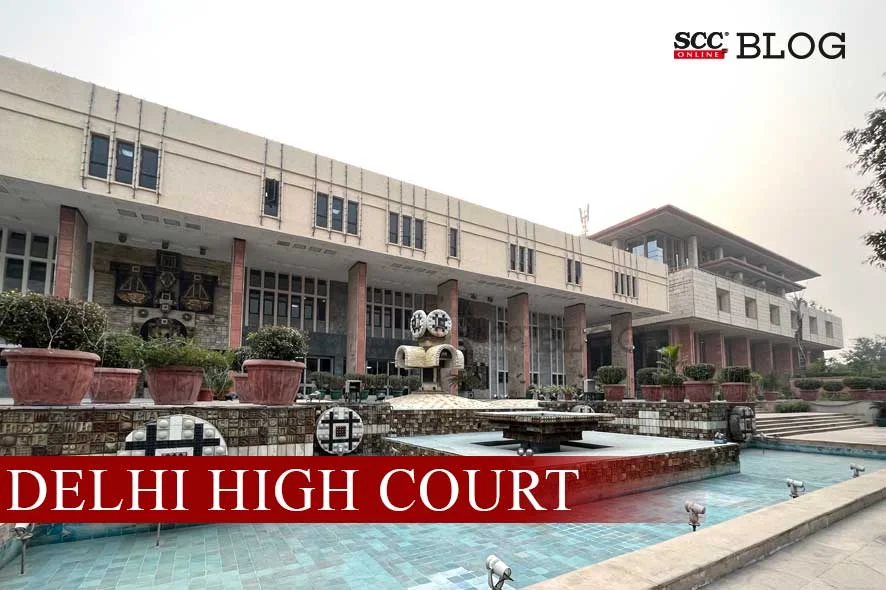Delhi High Court: In a public interest petition filed for seeking issuance of directions to Respondents 1 and 2 to desist from demolishing/removing the Ashiq Allah Dargah, including the chillagah of Baba Farid and other surrounding historical monuments in Mehrauli or Sanjay Van, the Division Bench of Manmohan, ACJ and Manmeet Pritam Singh Arora, J., took judicial notice of the fact that Delhi was one of the cities, that was worst affected by the pollution. No month had passed when the Air Quality Index did not cross the hazardous mark, and according to the doctors, even lungs of young children were being adversely affected. Thus, the Court opined that right to health, right to breathe and right to heritage and culture had to be harmonised and balanced.
The Court opined that there was adequate safeguard inbuilt into the system, as the religious structures such as those mentioned in the present petition could be demolished only after taking a prior approval from the Religious Committee which was headed by the Lieutenant Governor of Delhi. The Court opined that the undertaking provided by the respondents that no protected monument or national monument declared either by the Central or State authority should be demolished was fair, reasonable and stroked a balance between the competing claims/interest. Consequently, the Court accepted the statements/undertakings/assurances given by the respondents, and held the respondents bound by the same.
Background
In the present case, the petitioner stated that Respondent 1 had demolished adjacent structures in Mehrauli, including the Akhunji Masjid and Haji Rozbih Dargah without issuance of prior public notice. It was stated that the demolition of such old heritage structures in Mehrauli took place under the garb of removal of encroachments, despite such monuments being recorded in historical records.
The petitioner stated that the area containing the Ashiq Allah Dargah had been barricaded by the police and public access had been restricted, and the caretakers of the dargah had been removed from the premises, thus raising serious apprehension of its impending demolition by the Respondents. Further, the petitioner stated that the Dargahs and surrounding monuments ought to be protected as they are of historical, artistic and archaeological interest. Further, the sites in question had been noted in authoritative studies, thus eliminating any question of encroachments.
The respondents stated that all the structures and/or sites which had been declared by any statutory authority as a protected monument or as a national monument should not be demolished. The respondents further assured the Court that the demolition action in the concerned area should be taken only in accordance with law.
Analysis, Law, and Decision
The Court opined that undoubtedly life in its expanded horizons included all that gives meaning to a man’s life, including his culture, heritage and the protection of that heritage in its full measure. The Court further took judicial notice of the fact that Delhi was one of the cities, that was worst affected by the pollution. No month had passed when the Air Quality Index did not cross the hazardous mark, and according to the doctors, even lungs of young children were being adversely affected. Thus, the Court opined that right to health, right to breathe and right to heritage and culture had to be harmonised and balanced.
The Court noted that Mehrauli and Sanjay Van were marked as green/forest areas in the Master Plan and green areas were the lungs of the city and efforts had to be made by all statutory authorities to ensure that no illegal and unauthorised construction was carried out on this public land dedicated for public purpose. Further, on examination of the photographs annexed with the writ petition, the Court opined that it was apparent that fresh construction had been carried out in the immediate past using blue, green, brown and white tiles which were not available in the distant past. Further, from the photographs, it was apparent that some of the structures located amid thick forest had been renovated recently and occupied by certain families.
The Court opined that there was adequate safeguard inbuilt into the system, as the religious structures such as those mentioned in the present petition could be demolished only after taking a prior approval from the Religious Committee which was headed by the Lieutenant Governor of Delhi. The Court opined that the undertaking provided by the respondents that no protected monument or national monument declared either by the Central or State authority should be demolished was fair, reasonable and stroked a balance between the competing claims/interest. Consequently, the Court accepted the statements/undertakings/assurances given by the respondents, and held the respondents bound by the same.
[Himanshu Damle v. DDA, 2024 SCC OnLine Del 807, Order dated 08-02-2024]
Advocates who appeared in this case:
For the Petitioners: Satyajit Sarna and Reaa Mehta, Advocates;
For the Respondent: Sanjay Katyal and Shobhana Takiar Standing Counsels with Kuljeet Singh and Nihal Singh, Advocates and Rahul, Legal Assistant, DDA, Apoorv Kurup, CGSC with Akhil Hasija, Advocate.







